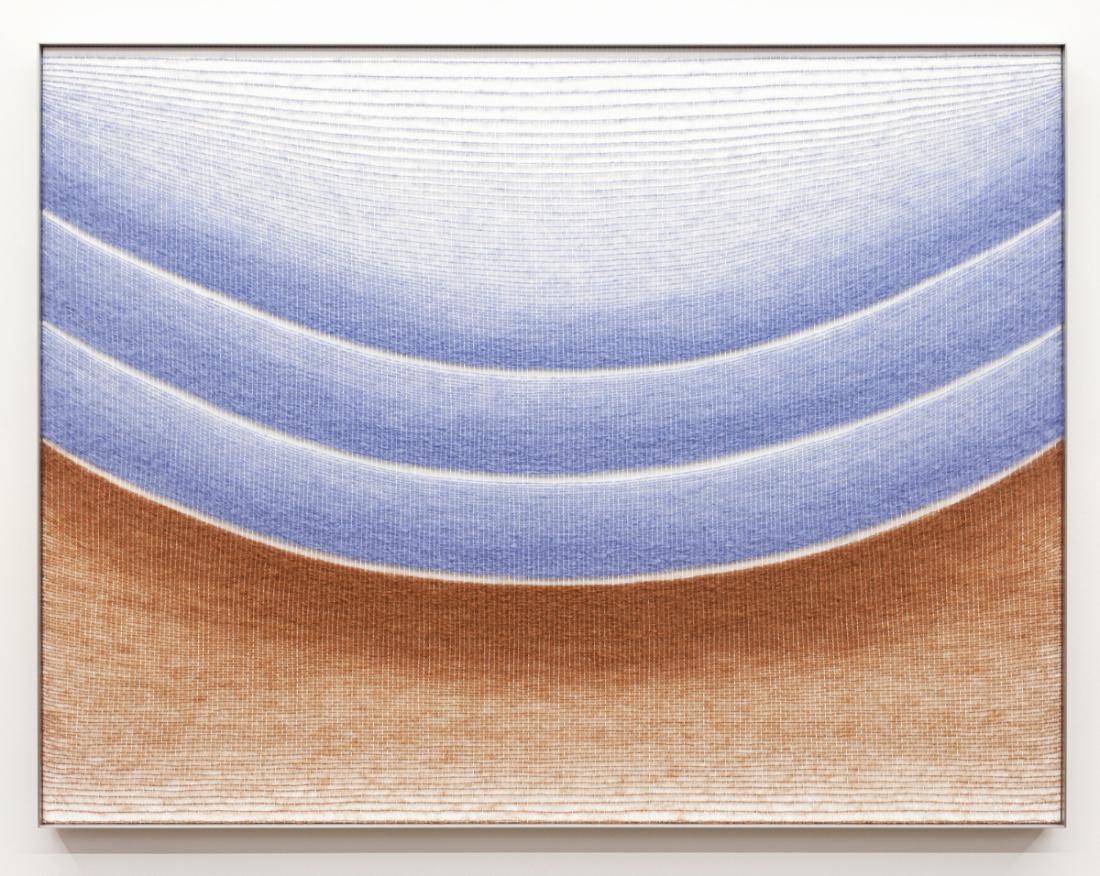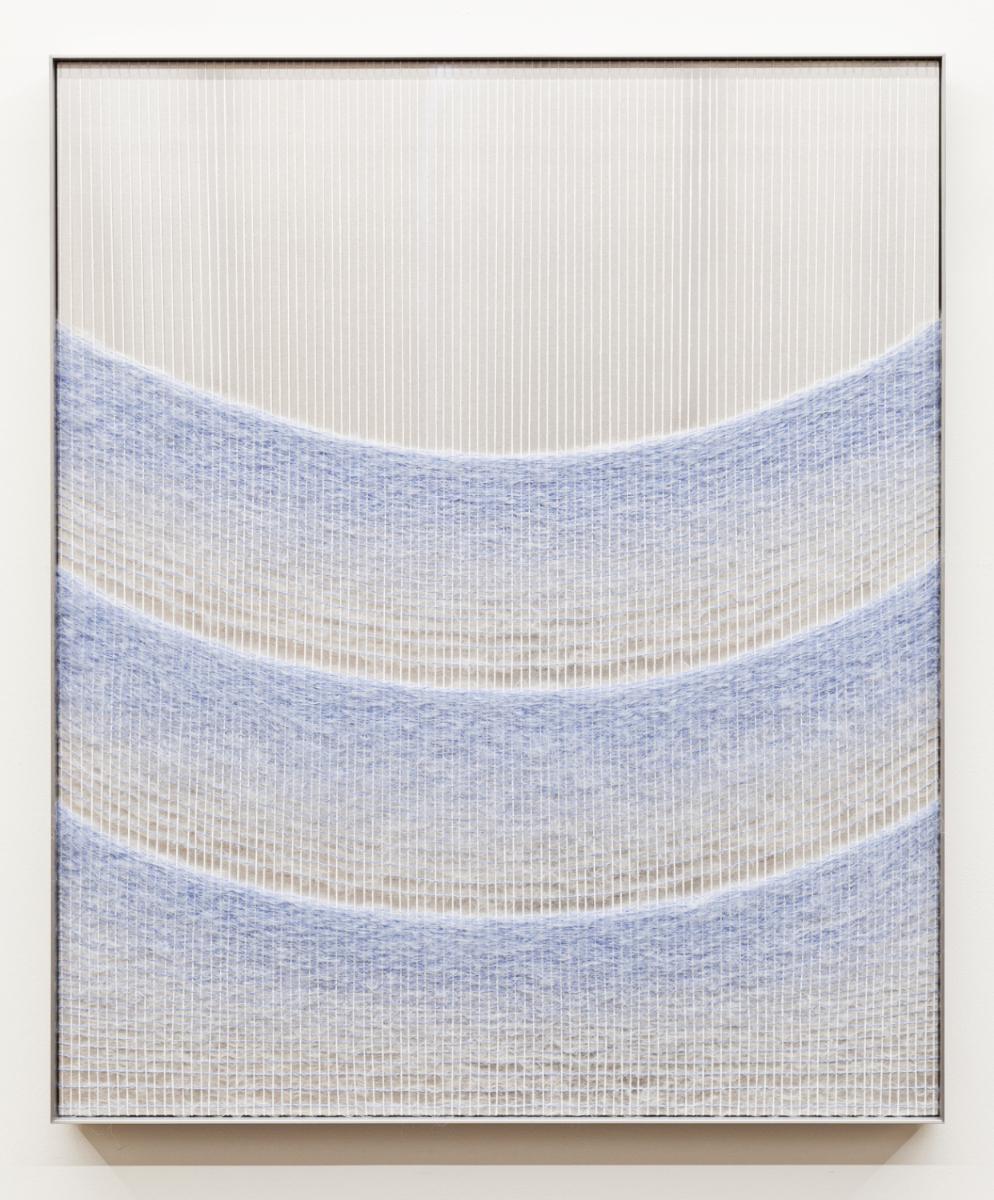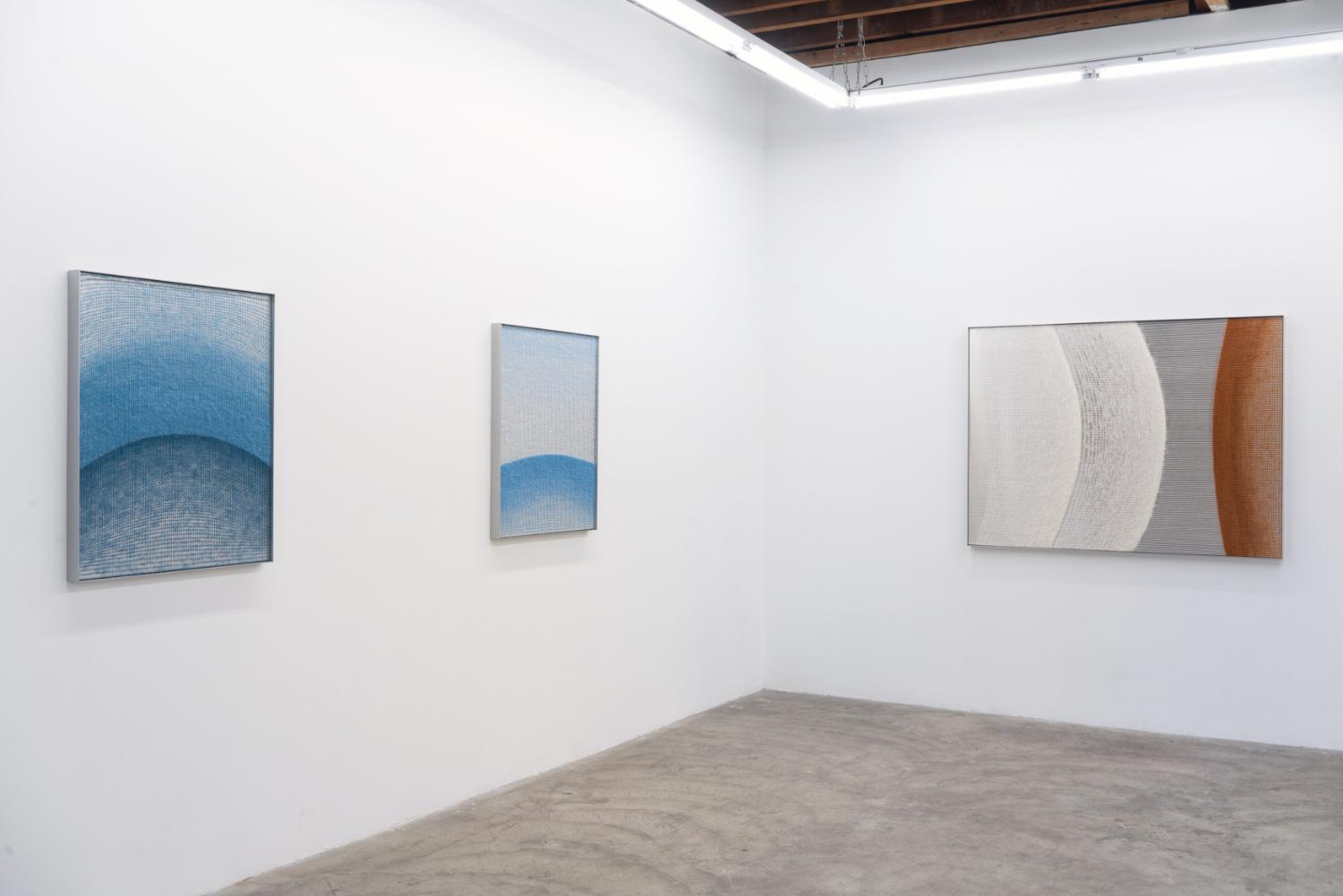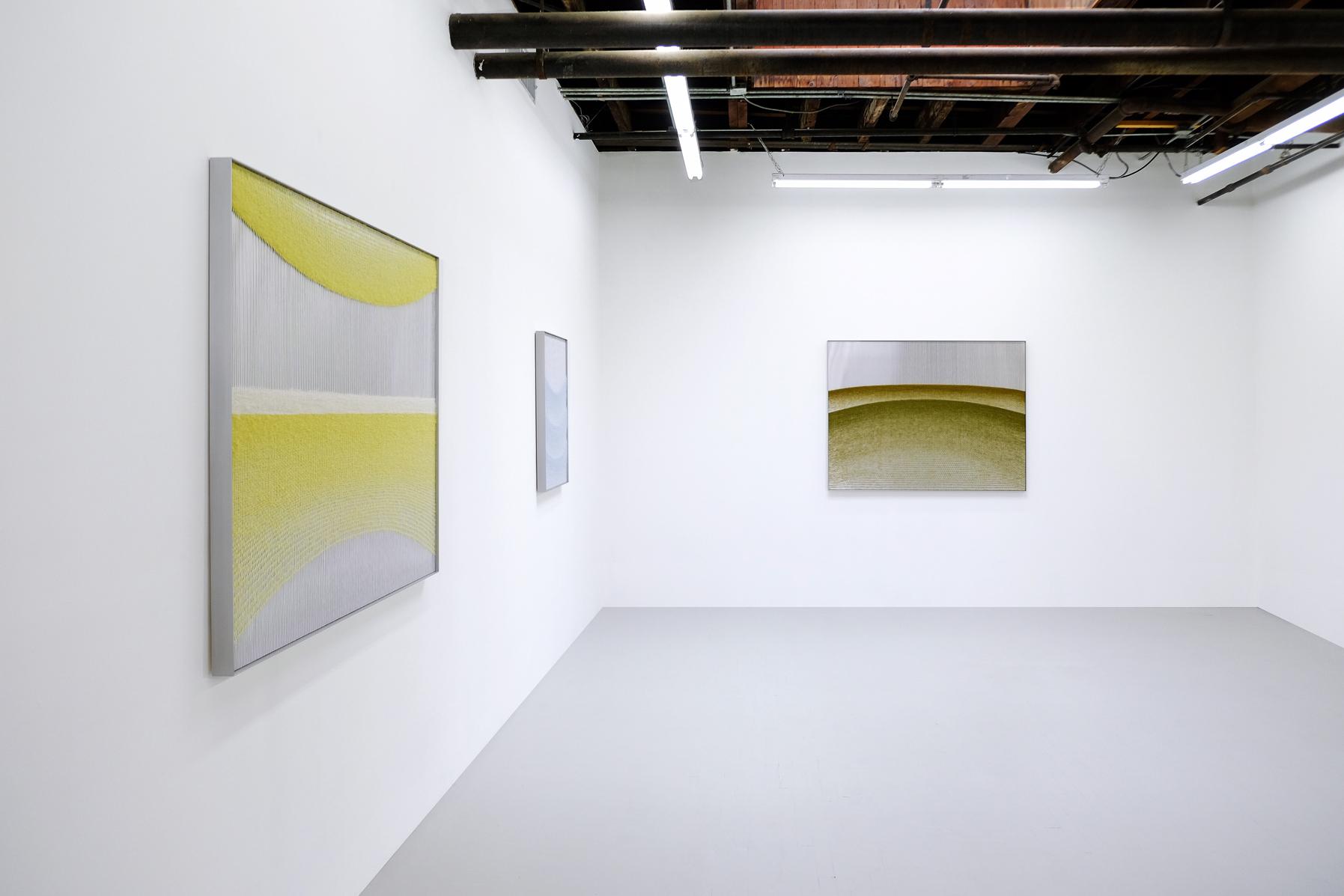THE DRAWN ELLIPSE
The weft arcs through the works with the awareness of a drawn line, unrestricted by the rectilinear order imposed by the loom. The ellipse is among the first fundamental shapes practiced in perspective, with mathematics that give way to dimension. Facing the tapestry loom as she weaves, Jung draws movement and suspension in space as she contains a color field within the contours of an ellipse. In the six digit series, ellipses are always cropped, suggesting a larger composition beyond the frame, the full memory or complete story. It also implies that the forms are in motion, ascending or descending. In 102417 Pale Blue and Brown Ellipses, three tiers of blue, each representing a calendar day, fall upon a lower brown arc, cascading with the emotive power of the weight of the sky against the earth.
The complexities of the story unfold through this reactivity, in the works’ sensitive spatial and proportional
relationships. Ellipses push, mirror, replace, materialize and dematerialize. In the work 100317 Yellow Ellipses, a thin white rectangle extending the width of the composition obstructs the meeting of two ellipses, the denied expectation of a perfect fit. The reversed ellipse then disappears, and in another work, is completely absorbed by a denser field.
PILLOW + VOID
Jung’s now iconic use of brushed mohair blurs the distinction between material and feeling. Its pilosity tempers the work’s strong physicality, creating an absorbent field that completely takes one in – its tactility seductive and inviting with an effectual presence. The mohair suspends the weft as a defused line, and when intersected with light, results in a soft halo. A quiet visual buzz hovers just in front of the work’s geometry.
The atmospheric quality of the work’s surface amplifies the physical as much as the visual experience. What started as a geometric foundation has become an actively absorbing plane. Where the weft is absent however, is just as remarkable. Density of form against void sets off a palpable dichotomy of emotive contrasts – pillow and void, presence and absence, the feeling of being enveloped or exposed.
The works’ spatial depth is impressively ambiguous, extending in front and behind the grid, obscuring any notion of a two-dimensional woven plane. This space between forms is designed to integrate the transient effects of ambient light and human movement against the work’s metallic backing, further pulling the viewer into the work while mirroring an inexplicable emotional depth in this dimensional space.
































